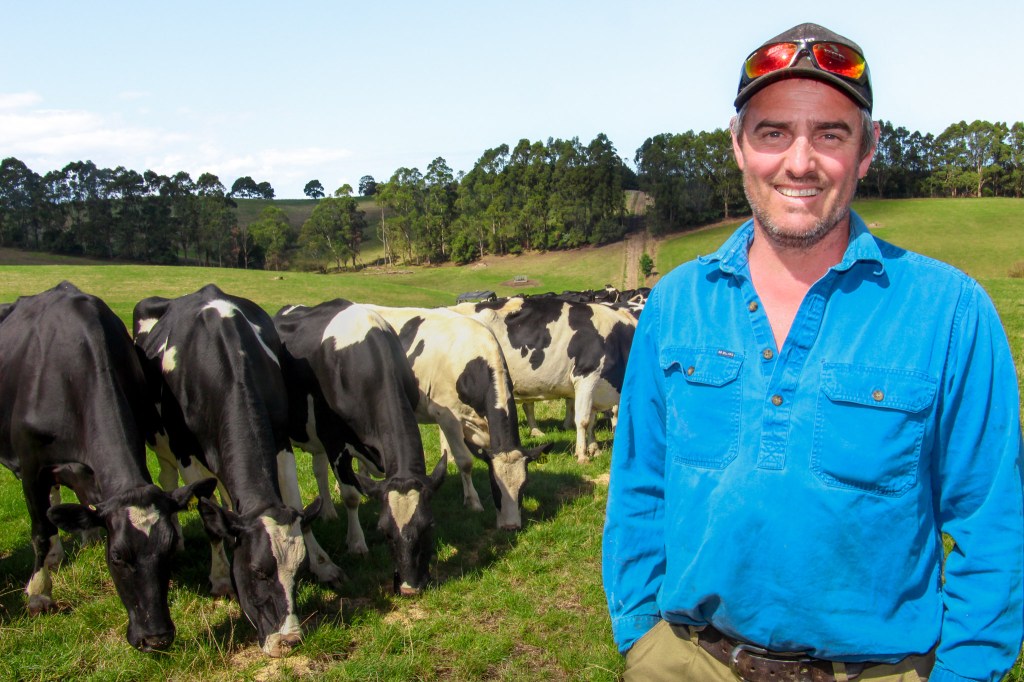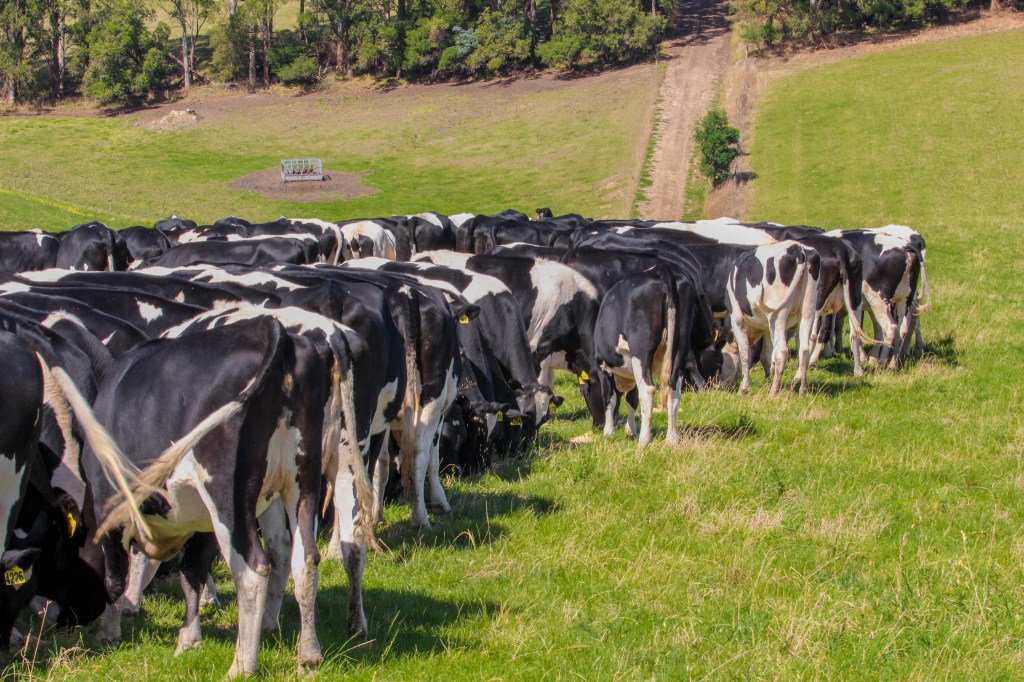Easy breeding at Toora
When it comes to breeding dairy cattle, Dan Knee likes to keep it simple. In fact, the Gippsland dairy farmer would prefer to have as little to do with the genetic selection within his herd as possible. After all, he’s the first to admit he doesn’t know a lot about breeding and is “happy to keep it that way”. But, as a businessman, he understands the value of genetics and the productivity that’s derived from an efficient, durable cow that suits the hilly terrain at his Toora farm.
That’s why Dan has been working with the ABS Australia Gippsland team and its technical and genetic services representative Matt Aikenhead. “I give ABS goals to work on, like bringing down the stature of the cows, reducing mastitis and improving fat and protein,” Dan said. “We want cows that are still going in seven years’ time, they’ve got to be here otherwise they haven’t made me any money.”

Dan and his wife Cindy milk 400 cows in a split calving system. Last year their 550kg Holstein herd produced 580kg of milk solids from pasture, a little vetch hay and 2.2 tonnes of grain/cow.
Part of the Knees’ most recent breeding plan has included maximising heifer numbers with ABS Sexcel®. Thanks to the success of the sexed genetic product, Dan has been able to introduce about 100 heifers into his 400-cow herd each year. While this means the average age of the herd is only about four years-old, he’s hoping adding extra females could open an additional income stream for the business with cow sales. Using Sexcel and combining it with genomic testing has also enabled Dan to retain his most profitable heifers and sell the others to the export market to diversify his income. The first of his genomically tested heifers will enter the milking herd this year.
ABS Australia Gippsland sales team member Brian Enbom said the genomic data will merge into ABS’ Genetic Management System® (GMS®) to guide future breeding decisions. “It will work both ways, genomics will help us select which cows to breed with Sexcel and which high-ranking bulls to join the cows with,” he said. “And, we will know the highest ranking BPI heifers will be here, because the lower ones had already been exported.”
Retaining the top portion of the herd and exporting the rest has already paid dividends for Dan and Cindy. The genetic merit of their herd is rising each year. The 2021-born heifers have a Balanced Performance Index (BPI) of 229, compared to 202 BPI for the heifers born a year earlier.
Thanks to genomic testing, Dan and Cindy culled the lowest performing heifers from the 2020-drop and gained an average 10 BPI points to average a total 202 BPI for that heifer group. The BPI for the entire herd – excluding the 2020-2021 heifers – and calculated from pedigrees and herd testing is 87.

Building on this genetic improvement trend will become even more important for Dan and Cindy in the coming years as they concentrate on decreasing numbers. “Our goal is to reduce our herd,” Dan said. “That’s why it is important to breed good cows.”
